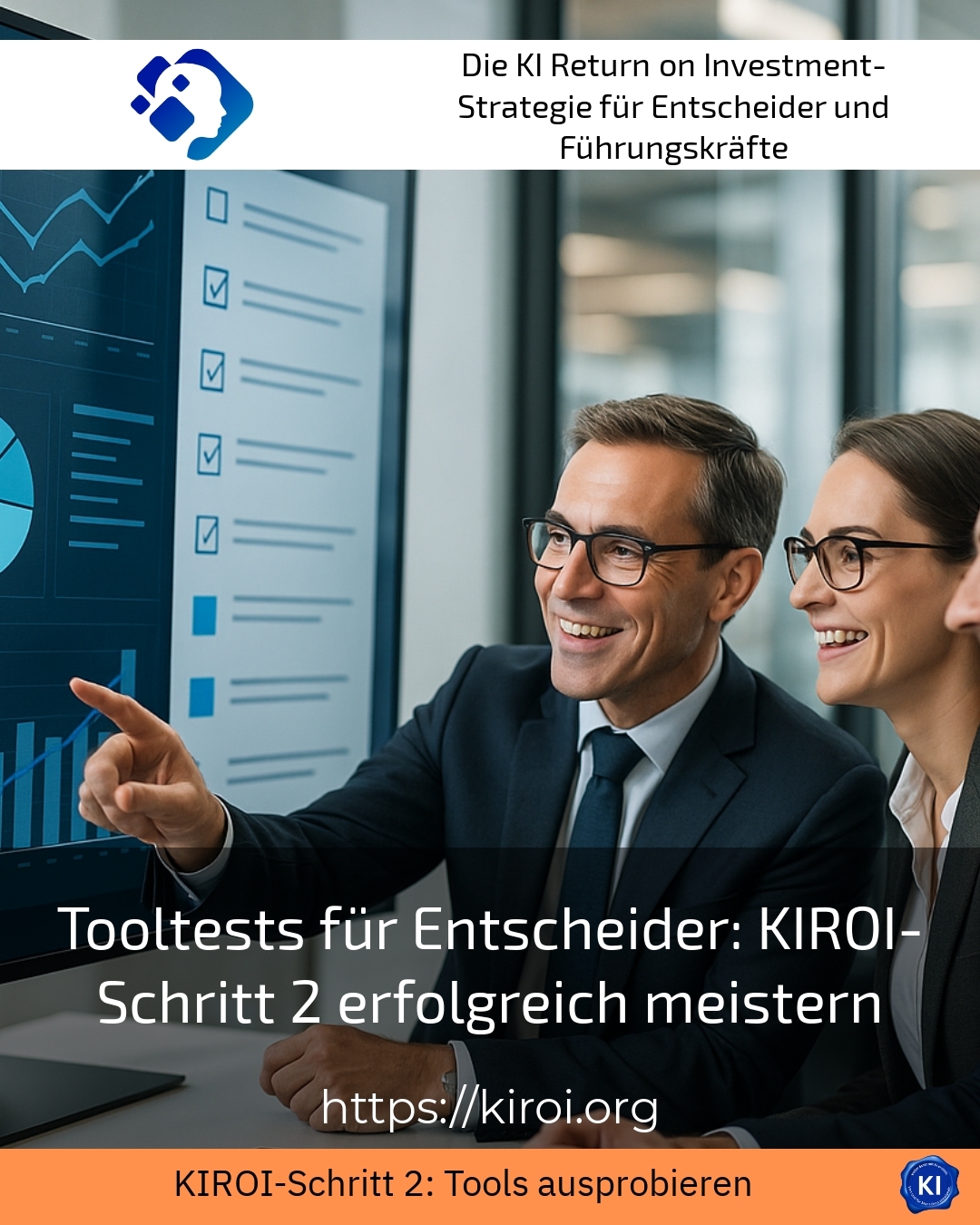Tool tests play a central role for decision-makers who want to select and implement suitable software solutions as part of KIROI step 2. They help to evaluate the actual benefits of different tools in a practical manner. The focus should not only be on technical functions, but also on user-friendliness, compatibility and customisability. The challenge is to create a sound basis for strategic decisions through systematic test procedures and accompanying coaching.
Tool tests as a success factor in the selection process
The tool test begins with a detailed analysis of the requirements and the definition of clear use cases. Managers then select tools that they try out in real projects or controlled environments. Specialist requirements from various departments are incorporated in order to obtain a holistic picture.
In the manufacturing industry, for example, tool tests are used to check early warning systems for machine faults. This allows companies to recognise potential failure risks at an early stage and increase production stability at the same time. In the marketing sector, tool tests enable the evaluation of SEO tools that uncover gaps in keyword coverage and create competitive advantages. In the office sector, automation tools are tested that make routine tasks easier and can be seamlessly integrated into existing office applications.
Another key to success is the iterative design of the tool test. The tools should be used over a longer period of time in different scenarios, as their effectiveness often only becomes apparent when they are used regularly and adapted to operational processes.
Practical examples of tool tests in practice
BEST PRACTICE with a customer (name withheld due to NDA contract): An SEO tool focussing on competitive analysis and keyword gap analysis was tested at a medium-sized technical services company. The tool made it possible to specifically identify competitive gaps and effectively develop the digital strategy.
In retail, a company uses tool tests to assess various e-commerce platforms in terms of performance and user experience. This enabled optimisations to be implemented in a targeted manner that sustainably supported online sales.
Digital documentation systems are being tested under real conditions in the healthcare sector. Practice shows an increase in efficiency and a reduction in sources of error in patient administration.
Tips for a successful tool test in KIROI step 2
A structured approach is crucial to the success of the tool test. Firstly, it is important to clearly define the requirements and to include different perspectives from specialist departments. This guarantees that the tool meets the actual needs of the company.
Transparent documentation of all test results is also recommended: The strengths, weaknesses, costs and effort involved in the integration should be clearly presented. This provides decision-makers with a reliable basis for decision-making.
Professional coaching, as offered in the KIROI process, supports the comparison of tools and helps to maintain an open attitude to learning processes. Not every tool is suitable for all applications, which is why it is important to systematically evaluate the possibilities and limitations of the tools.
Application examples for implementing the tips
BEST PRACTICE at a customer (name hidden due to NDA contract): A media production service provider conducted a tool test with various AI writing tools. The methodical analysis enabled the team to compare the text quality and customisability of the tools and make strategically sound decisions for the introduction of automated text creation.
In the field of logistics, tool tests are used to evaluate AI-supported demand forecasts and route optimisations. This enables companies to significantly increase efficiency and react flexibly to market requirements.
A financial services provider tested various tools for contract management. User-friendliness and seamless integration into existing IT structures were particularly important.
My analysis
Tool tests are an indispensable instrument in KIROI step 2 for selecting software and AI solutions that are a perfect fit. They promote transparency and allow an objective evaluation of the tools in an operational context. Decision-makers benefit from a structured approach and accompanying coaching, as individual requirements are better taken into account and subsequent integration risks are minimised. The large number of practical examples from various industries shows how versatile tool tests can be used to provide sustainable impetus for digitalisation and make optimum use of innovative solutions.
Further links from the text above:
Tool test in KIROI step 2: How decision-makers find the best
How decision-makers master AI tools in KIROI step 2
Tool test for decision-makers: clever use of KIROI step 2
Tool test in KIROI step 2: How decision-makers get started
Tool tests in KIROI step 2: How decision-makers find the right tool
For more information and if you have any questions, please contact Contact us or read more blog posts on the topic Artificial intelligence here.















